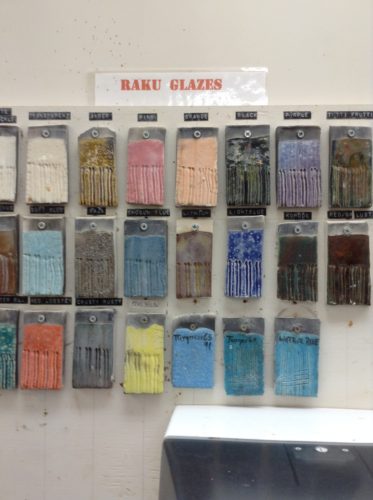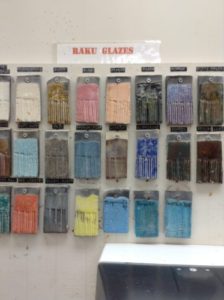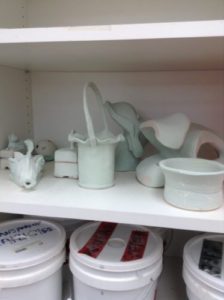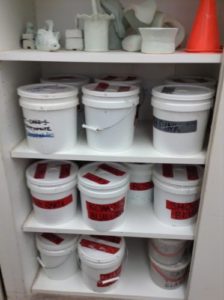Raku is a low-fire ceramic technique that was developed in the 16th Century in Japan. In using this technique, a bisque fired piece is coated with a low-firing Raku glaze. The best clay to use for Raku is WSO, while B-Mix or Porcelain should not be used.
As can be seen from the pictures, we are fortunate to have a wide variety of Raku
glazes to choose from. The Raku glazes are found on a shelf in the special Raku
cabinet in the back of the room between the glazing area and the lunch room. The Raku
glazes are thick and are applied with a brush. Once the glaze is applied, the bottom of
the piece needs to be cleaned just as with the other Cone 10 glazes in the Studio.
Once the bottom is cleaned, the piece is placed in the Raku cabinet. There is an as
needed special firing for Raku pieces. During this firing process, the glaze melts,
creating a glowing piece that is removed from the kiln with special tongs.
In our Studio the American Raku method is used. This process was developed in the
1960s by Paul Soldner, and uses a metal, non-combustible container filled with organic
materials. Upon removal from the kiln that was fired to a bright, red heat of 1800
degrees, the piece is then quickly placed into a container of newspaper and is tightly
covered. This smoking “reduction” atmosphere changes metallic oxides into a brilliant
luster. The change in temperature causes the glaze to crackle in abstract patterns. The
results are never totally predicable, making each piece truly unique. Try this wonderful
process and prepare to be dazzled!
Thanks to Sabine Stadler Bayless, Richard Moren and Ron Spencer for their input into this article.
Portions of the article were found in a previous P & S Newsletter.



